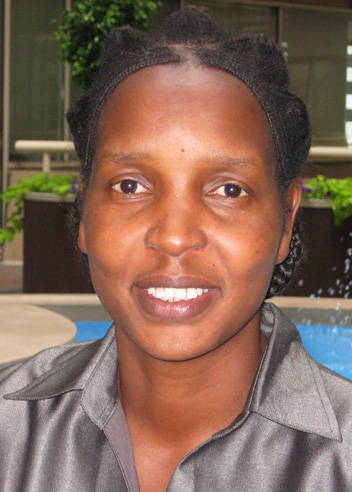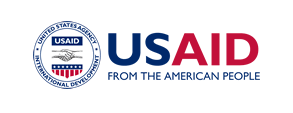The Health Policy Project ended in 2016. Work continued under Health Policy Plus (HP+) until 2022.
NEWS & VIEWS

Following the UN High-level Meeting on AIDS in June 2011, the Health Policy Project (HPP) sat down with Regina Ombam, Head of Strategy for Kenya's National AIDS Control Council (NACC) and a key advisor to the country's delegation for the high-level meeting. Ms. Ombam has served with NACC for five years and contributed to Kenya’s second and third national HIV/AIDS strategic plans, KNASP II and III.
HPP: You recently attended the UN High-level Meeting on AIDS. What were some of the key outcomes from the meeting and how do they relate to your work in Kenya?
Regina: The high-level meeting was a very good meeting, especially for sub-Saharan Africa and Kenya in particular. We talked about universal access and how, almost 30 years since the time HIV and AIDS were discovered, countries are still not able to achieve universal access. This meeting helped pull together our minds to look at key obstacles in the areas of prevention and treatment, from a leadership point of view, from an innovation point of view, and from a human rights point of view. This is critical for Kenya because the rate of infections is not declining. Kenya has to think of innovative ways of responding in terms of prevention and treatment. So this was one meeting that clearly opened eyes.
HPP: Are there specific strategies that came out of the meeting that Kenya will be able to act on?
Regina: Yes. For example, Kenya's strategic plan identifies key populations at higher risk of HIV exposure and is thinking of ways to ensure that these populations access treatment and also have proper outreach programs. Kenya is also addressing the feminization of the epidemic and the importance of designing interventions for women and girls so that we have a more effective response. Kenya is considering resource needs and innovative ways of raising domestic financing to reduce dependence on external financing. Additionally, Kenya is considering policies and the legislative framework, but the enabling environment needs to be taken more into account so the response is effective and yields the outcomes that have been anticipated in the strategic planning process. From a political point of view in Kenya, the new Political Declaration on HIV/AIDS will also place emphasis on leadership for the response at all levels, from the very top to the very lower levels.
HPP: International development initiatives are placing increased emphasis on country ownership and sustainability. How is country ownership being thought of in Kenya?
Regina: There is a vibrant discussion about country ownership within Kenya, which is being led by HIV stakeholders. When we think about country ownership, we consider several aspects. First is leadership. Kenya follows the "Three Ones" Principle, with one strategic plan, one coordinating body, and one monitoring and evaluation framework. Leadership also requires political commitment at all levels, from the President and parliamentarians to the lower level officials speaking out on the issues. The second aspect is resources. Kenya cannot have country ownership when the majority of resources for the response comes from external sources … The third aspect encompasses processes. Kenya has multiple partners, each with different planning cycles and processes. We need to harmonize these processes. Next is policy and strategy, which should be country-led with broad multistakeholder engagement. All policies, plans, and strategies should be clear, measurable, and lead to specific outcomes across ministries and sectors working on HIV programming so each partner understands what needs to be done. Finally, it is important to look at the relationship with donors, to encourage demand-driven technical assistance and align the inputs of development partners with the national program.
HPP: In addition to the national strategy, what is the nature of the policy environment in Kenya? Are there key policies being implemented or recent reforms that are making a difference in the policy environment?
Regina: One key thing that Kenya is doing is ensuring that the HIV response falls within the social pillar of the country's Vision 2030. The social pillar calls for investing in the people of Kenya. Therefore, instead of HIV responses being considered independent ways of intervening, we are addressing HIV within the Vision 2030 and ensuring that responses are in line with what we have outlined in our development plans. So the HIV response should not only focus on the health aspect, but also the socioeconomic aspects of the epidemic. This approach will help ensure that we meet what is indicated in our Vision 2030, by investing in the people of Kenya and addressing HIV from a multisectoral point of view.
HPP: A crucial component of the enabling environment is stigma reduction. What Kenya is doing to reduce stigma against HIV-positive people and other key populations?
Regina: The issue of stigma is pretty complex. It is one term that we all use when we are trying to explain things we are not able to quantify. We say, "This is happening because of stigma and discrimination." Often, however, we do not go in-depth to figure out what contributes to stigma and what contributes to discrimination. What Kenya has done, which is remarkable, is to push the agenda of working closely with the networks of people living with HIV, especially by carrying out interventions on prevention with positives and also involving people living with HIV and marginalized populations in the planning and budgeting for HIV responses. To me, this involvement of people living with HIV is one way of de-stigmatizing the epidemic because they are able to give a true picture of what is happening and can contribute effectively to the response … Kenya has also analyzed key populations, including injecting drug users, sex workers, discordant couples, and people with disabilities. This analysis will inform how the country can better target interventions to populations most in need. As the saying goes, "Prevention is better than a cure." If Kenya does not adequately address prevention needs now, the HIV response will be more costly in the long run.
What's New
- Something to Build On: “Innovation Exchange” Celebrates the Health Policy Project’s Close and a New Beginning
- What Will it Take for Tanzania to Achieve ART Targets and Ensure Long-Term Sustainability of the HIV Response?
- Helping Kenya’s County Leaders Advocate for Increased Health Investments
- HPP Holds Working Meeting on Ensuring Responsible PEPFAR Transitions for Key Populations
- Health Policy Project Celebrates 2016 International Women's Day
- HPP Staff Participate in White House Conference on HIV Stigma Reduction

